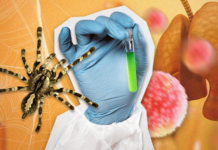FROM making your heart beat to getting light-headed when you see your beloved, love indeed makes us feel and do unusual things. But the irrationalities often associated with the heart, in truth, comes from a source inside the brain—the hypothalamus. It’s always the brain, after all, that’s over the heart.
According to Dr. Rosalito De Guzman, chair of the Department of Psychology of the College of Science, the hypothalamus is a structure at the base of the brain, responsible for emotional behavior and a variety of other functions like the regulation of temperature and hunger.
“The hypothalamus is the chief subcortical center for regulation of the sympathetic and parasympathetic activities which are involuntary activities activated under emotional states,” De Guzman told the Varsitarian.
Coming from a Greek word meaning ‘under the thalamus,’ the hypothalamus regulates metabolic processes necessary for life and other autonomic or involuntary activities like hunger, thirst, and the ability to feel pain or pleasure. Further, the hypothalamus is responsible for a number of mood and behavioral functions like heart rate, body temperature regulation, wakefulness and sleep cycles, metabolism, and energy levels. The hypothalamus also links the nervous system to the endocrine system through a “master gland” known as the pituitary gland.
When an individual perceives another as attractive, a part of the hypothalamus transmits a stimulus to the pituitary gland through various bodily chemicals. In turn, the pituitary gland releases hormones which are rapidly absorbed in the entire bloodstream. The reproductive glands quickly respond to these hormones by releasing their own hormones into the bloodstream, bringing about the rapid heartbeat and light-headedness that people experience when they are “in love”.
According to Shyness & Love: Causes, Consequences, and Treatment, by psychologist Dr. Brian Gilmartin of the Westfield State College, Massachusetts, the giddiness a person experiences at the initial stages of falling in love is comparable to a reaction that can be attained when an individual takes an amphetamine—a stimulating drug that affects the central nervous system.
American psychologist Robert Sternberg postulated a geometric interpretation of love, which he called the “Triangular Theory of Love” composed of three stages: lust, attraction, and attachment. The first stage, lust, is driven by the sex hormones testosterone and estrogen. Attraction, on the other hand, is referred to as the “love-struck” phase, when an individual may lose appetite or sleep, or prefers to spend hours daydreaming. These activities can be attributed to a group of monoamine neurotransmitters that include dopamine, norepinephrine, and serotonin. When a person is in love, dopamine and norepinephrine levels are high while serotonin levels are low. The final stage, attachment, is the commitment that keeps couples together when they go on to have children. The hormones oxytocin and vasopressin, released by the nervous system after sexual contact, help nurture intimacy between husbands and wives.
Dopamine is a “pleasure neurotransmitter” responsible for the blissful feelings of individuals in love while norepinephrine, a neurotransmitter similar to adrenaline, produces the racing heart and excitement that they feel. Both of these neurotransmitters produce elation, intense energy, sleeplessness, loss of appetite, and better concentration.
Meanwhile, lower levels of serotonin, which are similar to levels found in individuals with obsessive-compulsive disorder, are said to be the reason why some individuals “obsess” about their partners.
The brain in love
Science has already proven that the hypothalamus plays an essential role in romantic love. Brain imaging studies conducted by neurobiologists of the University of London found that certain regions in the brains of individuals are activated when they saw pictures of their beloved.
Using magnetic resonance imaging (MRI), Andreas Bartels and Semir Zeki studied the brains of 17 love-struck individuals. Once inside the MRI machine, these individuals were shown pictures of their partner followed by pictures of a friend to compare what parts of the brain were activated and what were turned off.
The scans showed that the areas of the brain related to reward and pleasure, namely the ventral tegmental area and the caudate nucleus, were activated. Love is said to activate these areas because of a neurotransmitter called dopamine which is secreted by the hypothalamus. The ventral tegmental area is rich in dopamine while the caudate nucleus is home to a dense spread of receptors for dopamine.
Bartels and Zeki also noticed that the regions of the brain involved in moral judgment go dim when in love. This finding offers a scientific explanation to the saying “love is blind”—why people in love seem to find no fault in their loved ones.
Limbic love
The hypothalamus is part of a complex set of structures included in the limbic system which controls the formation of memory by integrating emotional states with stored memories of physical sensations.
According to De Guzman, these structures are also involved in emotional behavior. “The limbic system is a group of structures in the brain involved in emotion, motivation, and memory. When one is in an emotional state, these structures are activated,” he said.
Some of these structures are the amygdala and the hippocampus. The amygdala sends and receives messages to organ systems via the hypothalamus and makes us aware of our feelings by transmitting emotional information to the thalamus. Thalamus is an area of the brain that helps process information from the senses, which then translates it for the frontal cortex, an area of the brain responsible for cognitive functions. On the other hand, the hippocampus plays a part in memory and spatial navigation. It allows an individual to compare conditions of a present threat with similar past experiences, thus, enabling him to choose the best option to ensure his survival.
All of these structures interact with each other to make us feel the sometimes painful but oftentimes wonderful feelings that come with falling in love. With reports from Mary Joy T. De Lara













